15 Motorcycle Patches to Avoid
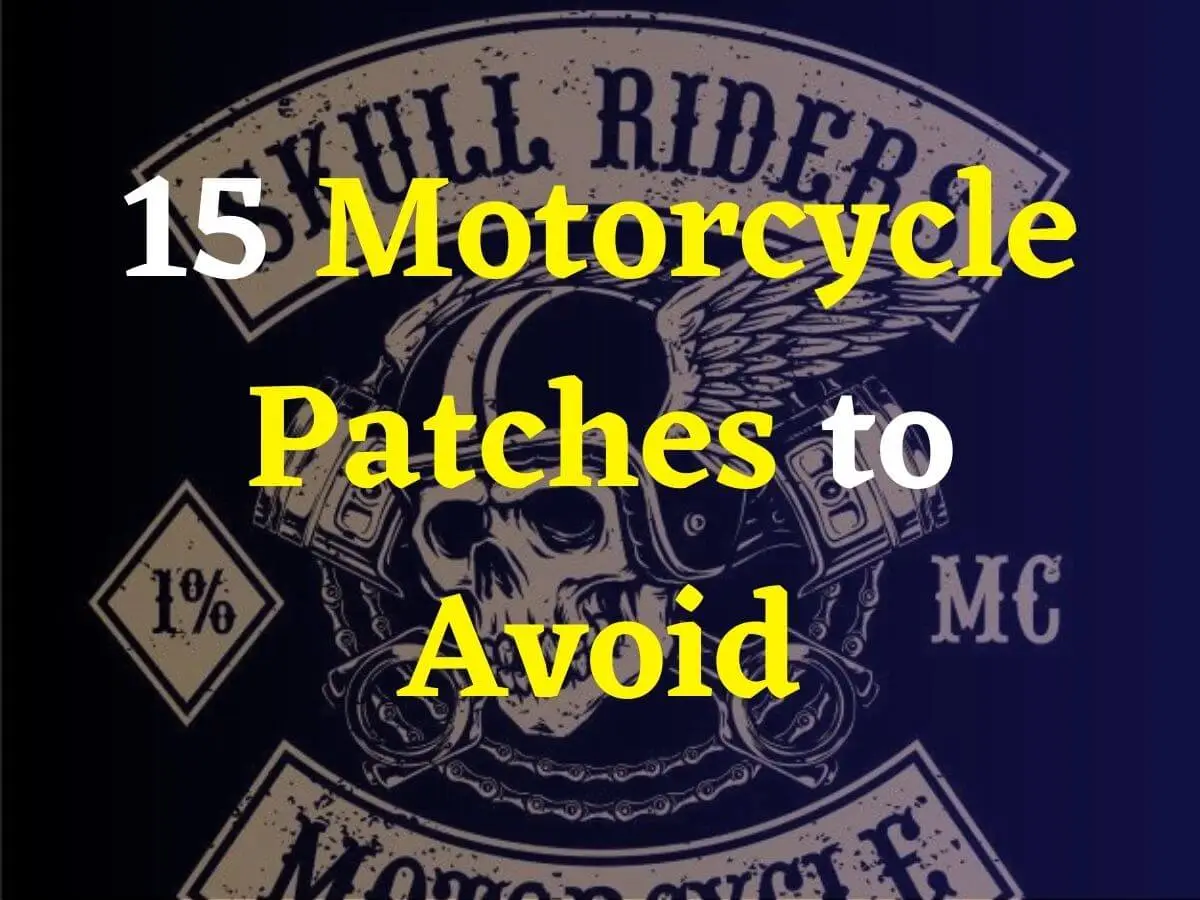
Like any other jacket, motorcycle jackets can be customized with patches. While some patches may be harmless, others may send a negative message or be associated with illegal activity. I have a few patches on my jacket that I love, but there are some out there that I would never put on my garment. Here are 15 motorcycle patches you should avoid if you don’t want to look like a biker gang member.
In Addition, we’ll take a closer look at biker patches and their meaning. From humorous and lighthearted to serious and even controversial, these patches have a lot to say about the biker lifestyle. So let’s dive in and explore the meaning of biker patches.
Contents
- What are Motorcycle Patches?
- Why Avoid Certain Motorcycle Patches?
- What Are The 15 Motorcycle Patches to Avoid?
- 1. One-Percenter (1%ER) Motorcycle Patch
- 2. Two-Percenter (2%ER) Motorcycle Patch
- 3. Three-Percenter (3%ER) Motorcycle Patch
- 4. Outlaw Motorcycle Clubs Patches
- 5. The Vagos MC Patch:
- 6. The Sons Of Silence MC Patch
- 7. The Bandidos MC Patch
- 8. The Pagans MC Patch
- 9. Mongols MC Patch
- 10. Hells Angels Dequiallo Patch
- 11. Red Cross Motorcycle Patch
- 12. Motorcycle Patches With Skulls & Crossbones
- 13. Hells Angels MC Patch
- 14. Dope Forever, Forever Loaded (DFFL) Patch
- 15.Outcast MC Patch
- Frequently Asked Questions
What are Motorcycle Patches?
Motorcycle patches are small, decorative pieces of fabric that are typically ironed or sewn onto a garment. They come in a wide variety of colors, shapes, and sizes and are often used to show affiliation with a particular group or organization. Patches can also be used to commemorate an event, express a political or social statement, or simply add some flair to a piece of clothing.
While patches are most commonly seen on jackets, they can also be found on vests, hats, pants, and other articles of clothing. In motorcycling, patches are often used to show membership in a particular club or gang and can indicate a rank within that organization.
Why Avoid Certain Motorcycle Patches?
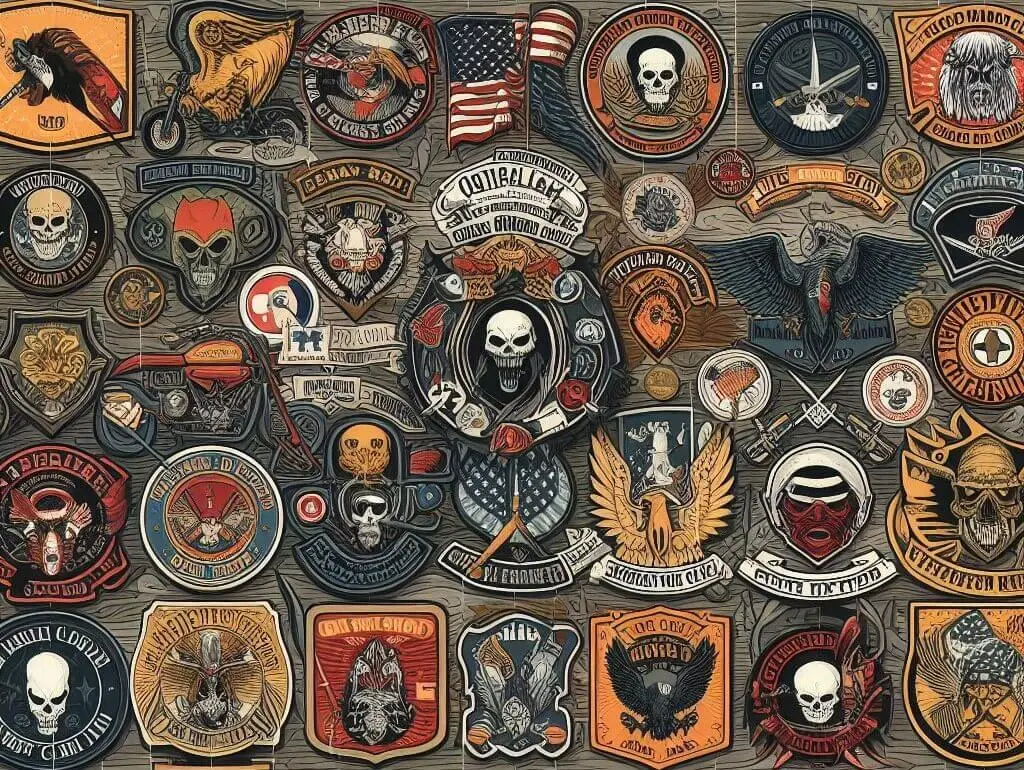
While some custom motorcycle patches are simply decorative, others can send an obvious message about the wearer’s affiliations and beliefs. In many cases, these messages can be pretty offensive or even dangerous.
For example, patches that display racist or sexist language should be avoided. Likewise, patches that promote drug use or illegal activities should also not be used.
In addition, it’s essential to be aware of the different meanings patches can have. For instance, a patch with a particular color or symbol may indicate that the wearer is a member of a specific gang. As such, it’s essential to research the meaning of any patch before putting it on your jacket, lest you inadvertently send the wrong message.
What Are The 15 Motorcycle Patches to Avoid?
1. One-Percenter (1%ER) Motorcycle Patch
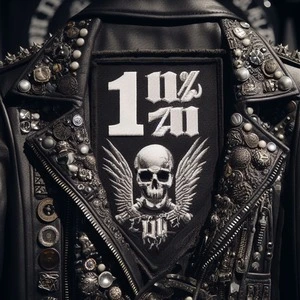
This patch is usually worn by members of outlaw motorcycle gangs and indicates that the wearer is part of the 1% of riders who don’t follow the law. If you’re not a member of an outlaw motorcycle gang, it’s probably best to avoid this patch.
This is one of the most dangerous motorcycle patches to wear, as it can make you a target for violence. The best way to avoid trouble is to steer clear of this patch altogether.
2. Two-Percenter (2%ER) Motorcycle Patch
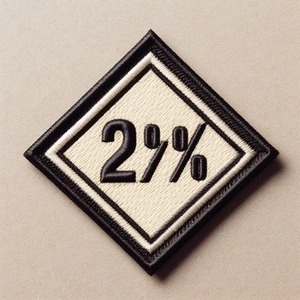
When you see this patch, it means that the person wearing it is identifying themselves as a criminal.
For example, the “2%ER” refers to the estimated two percent of motorcycle riders who are members of outlaw motorcycle gangs. These gangs are involved in a wide range of criminal activities, from drug trafficking to extortion.
3. Three-Percenter (3%ER) Motorcycle Patch
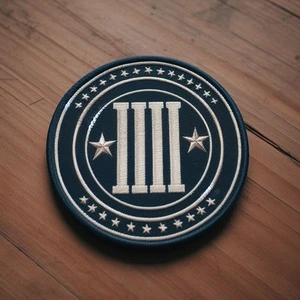
The Three-Percenters are a far-right militia group that rose to prominence in the wake of the 2016 presidential election. The group takes its name from the erroneous claim that only three percent of American colonists fought against the British during the Revolutionary War.
While the group claims to be patriotic and to support the Constitution, its members have been linked to several white supremacist and anti-government activities. For example, in 2017, Three-Percenter members were arrested for planning to bomb an apartment complex housing Somalian refugees in Kansas.
You might see this patch on the back of a biker’s vest or jacket. It is usually round and features a Roman numeral III in the center.
4. Outlaw Motorcycle Clubs Patches
Avoid wearing any Outlaw MC patches that indicate you are a member of an outlaw motorcycle club. These clubs are often associated with crime and violence, and you don’t want to give off that impression.
The best way to avoid this is to simply not wear any patches that say “outlaw” or “motorcycle club.” Also, avoid wearing any colors associated with these clubs, such as black and white.
Some people pretend to be cool by wearing these colors without being in a club, but it’s not worth the risk. So it’s best just to stay away from them altogether.
Related: Sons of Anarchy Patches
5. The Vagos MC Patch:
The club has been active in California, Arizona, Nevada, and Utah. The Vagos Motorcycle Club was founded in 1965 in San Bernardino, California. They are considered outlaw motorcycle gangs by the FBI and are involved in drug trafficking and other illegal activities.
Vagos are known to be involved in clashes with law enforcement and rival gangs. They are one of the largest OMGs in the United States, with over 1,000 members. Hence, the Vagos MC patch is one of the motorcycle patches to avoid.
6. The Sons Of Silence MC Patch
You might not have heard of the Sons of Silence Motorcycle Club, but it is considered one of America’s most dangerous biker gangs. Once you see their patch, you’ll understand why. The Sons of Silence MC patch features a skull wearing sunglasses and clutching a set of crossed pistols.
The word “silence” is written across the top of the skull, while the word “sons” is written across the bottom. Their website describes them as a “one percenter” motorcycle club, which means they subscribe to the outlaw lifestyle. So, if you’re looking to avoid trouble, steer clear of this patch.
7. The Bandidos MC Patch
I’m sure you’ve seen this one before. It’s a large, circular patch with a grinning skull wearing a cowboy hat. The Bandidos Motorcycle Club logo is one of the world’s largest and most notorious outlaw motorcycle gangs. If you’re not a member of this gang, it’s best to avoid wearing their patch. You don’t want to start a gang war unintentionally!
8. The Pagans MC Patch
The Pagans’ patch depicts the sun-worshipping, sword-wielding fire giant Surtr of Norse mythology. It is meant to strike fear into the hearts of their enemies.
Not only is this patch extremely intimidating, but it also has a criminal history. So it’s understandable why you would want to avoid wearing this patch. No one wants to be associated with a group involved in violence and crime.
9. Mongols MC Patch
I don’t understand why anyone would want to wear a patch that says they’re a member of the Mongols Motorcycle Club. This “outlaw” group has been linked to organized crime, drugs, and violence.
Founded in the late 1960s, the Mongols Motorcycle Club has become a notorious and influential force in the US biker scene. They boast a diverse membership, primarily consisting of Hispanic and Caucasian individuals, with a notable Asian-American presence.
Whispers of organized crime and violence have cast a shadow over the club for decades. While accusations persist, it’s important to remember generalizations are dangerous. Judging based on specific evidence rather than stereotypes is crucial.
Despite controversies, the Mongols continue to thrive, their chapters stretching across the nation. Their complex history, steeped in loyalty and rebellion, demands a nuanced understanding. Only then can we grasp the true essence of the Mongols: a brotherhood forever etched in American biker culture.
10. Hells Angels Dequiallo Patch
Avoiding the use of Dequiallo is akin to avoiding the use of one of the most terrible patches. You should avoid anybody wearing a patch identifying them as a member of the Hell’s Angels.
If a Hell’s Angel wears a Dequiallo patch over their heart, they have fought with police during a routine check or detention.
While proudly displaying this patch may empower its user, it will lead anybody who isn’t willing to face law authorities into serious problems.
11. Red Cross Motorcycle Patch
The Red Cross motorcycle patch symbolizes the humanitarian organization, but white supremacist groups have co-opted it. The Red Cross has asked people not to wear the patch, but it continues to be used by hate groups because of its association with the Ku Klux Klan.
Like a white cross, a red cross is just an Iron or Maltese cross that has been colored red with paint or embroidery. This cross represents a person involved in homosexual conduct of some kind.
The majority of MCs take issue with this and don’t accept people that fit this description as members.
Prison life tends to blur moral boundaries. Thus, it’s probable that the wearer’s Red Cross represents their actions behind bars.
12. Motorcycle Patches With Skulls & Crossbones
You may definitely get away with sporting a nasty, snarling, blazing skull on your coat or jacket, but you should be cautious. The skull and crossbones is a famous visual symbol that has become popular.
The skull and crossbones patch is a popular choice for motorcyclists who want to carry a constant reminder of their death. Additionally, it deters ditzy visitors unfamiliar with our customs or our kind of dark humor.
Members of more criminally-minded motorcycle clubs wear skull and crossbones patches to show that they have done anything wrong, either while incarcerated or for their organization’s welfare.
The skull and crossbones are a patch that should only be used by members of the commanding officer or enforcement ranks of illegal MCs. Simple words, you don’t have to involve someone carrying a skull and crossbones, especially if they’re having a terrible day.
13. Hells Angels MC Patch
The Hells Angels Motorcycle Club is one of the world’s most notorious and infamous biker gangs. Any patch bearing its name is likely to provoke a negative reaction from those who see it. It is basically an open invitation for trouble, so it is best to avoid wearing this patch.
Although the Hells Angels are not particularly active in the United States at the moment, they have a long history of violence and crime. Wearing their patch is tantamount to supporting their illegal activities.
14. Dope Forever, Forever Loaded (DFFL) Patch
Dope Forever, Forever Loaded is an abbreviation for such a state of mind. Dope, in this context, refers to illegal substances.
Similar to the “13” patch, this indicates that the wearer is a drug user and always carries the substance in question, either for personal use or to sell.
The DFFl patch is one of the most controversial patches out there. It is often associated with the Hells Angels and other outlaw motorcycle gangs. The patch features a skull with wings and a banner that reads “Dope Forever, Forever Loaded.” When worn by members of the Hells Angels, it often signifies that they are involved in the drug trade.
15.Outcast MC Patch
The Outcast Motorcycle Club is a one-percenter motorcycle gang founded in Detroit in the 1960s. In recent years, the Outcast MC has been embroiled in a turf war with the Hells Angels. Once you put this patch on your jacket, you declare your allegiance to the OutcasMC.
Most motorcycle gangs don’t take too kindly to outsiders, so you could be putting yourself in danger by wearing this patch. If you must show your support for the Outcast MC, do so from a safe distance.
Also, be aware that the Outcast MC is a predominantly white supremacist gang, so wearing their patch could also send a very hateful message. Hence, it is best to avoid this patch as much as possible.
Related article: Custom Rocker Patches
Frequently Asked Questions
What is the significance of the Hells Angels patch meaning?
The Hells Angels patches serve as a recognizable symbol for the biker club and its members. These patches prominently feature two rockers that flank the club name in the center. The colors used in the patches, red and white, hold important significance for the club. Red symbolizes the bloodshed in defense of the club, while white represents the purity and peace of its members. The rockers signify the freedom of riding on the open road and the club’s strong commitment to brotherhood.
What patches should you not wear?
You should avoid wearing any patches that are:
Biker gang patches (motorcycle club patches)
Obscene or graphic
Promote illegal activity
Derogatory towards any group or individual
Not appropriate for the occasion
Racist, sexist, or otherwise offensive
Not in good taste
Not reflect the image you want to portray
What are the rules for wearing biker patches?
There are no hard and fast rules when it comes to wearing biker patches, but there are some general guidelines that you should follow.
First, try to avoid putting too many patches on your jacket. A few well-chosen patches look much better than a bunch of random patches.
Secondly, be aware of the connotations of the patches you choose to wear. For example, some MC patches meaning Motorcycle club, such as the ones listed above, can be associated with criminal gangs or other unsavory groups.
What patches can I wear on my vest?
You can wear any patch you like. The main thing to keep in mind is to avoid certain patches that can result in harmful consequences. Other than these, you can wear any patch you want; just be sure to place them in a visible spot so that people can see them.
What does a 3 piece patch mean?
A three-piece motorcycle patch is usually used to denote membership in a motorcycle club. The top rocker is the club’s name, the middle patch is the club’s logo, and the bottom rocker is the club’s location. This type of patch should be avoided unless you are a motorcycle club member.

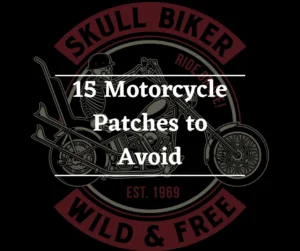






Am curious about a club from Lansing, MI, have been told is an outlawed patch to wear? Satan’s Sidewinders M.C. a family member was given colors to wear, but not until we know.
I belong to a MC in the area of Lansing, MI. We have a total of 11 chapters in the state including a chapter in Lansing, and have never heard of this club. Not to mention, the Outlaws are the dominant 1% Club in the state. Highly unlikely that they would allow a Outlaw club to as it is said stand up a chapter. I suggest if you family member put their patch on his back he stays out of sight. BTW no legitimate MC just hands out their patch, it MUST be earned.
When you wrote “majority of Mongols are of Asian American descent,” it let me know you probably know zero mongols. It is a majority Hispanic gang started by primarily Hispanics in CA who were not allowed to join all white clubs.
Ah, thanks for setting me straight on that! You’re right, I misfired on the Mongols’ demographics. My apologies for the misinformation. I’ve updated the information to reflect the accurate fact that the club’s membership is diverse, with a strong presence not just from Asian-Americans, but also from Hispanic and Caucasian individuals.